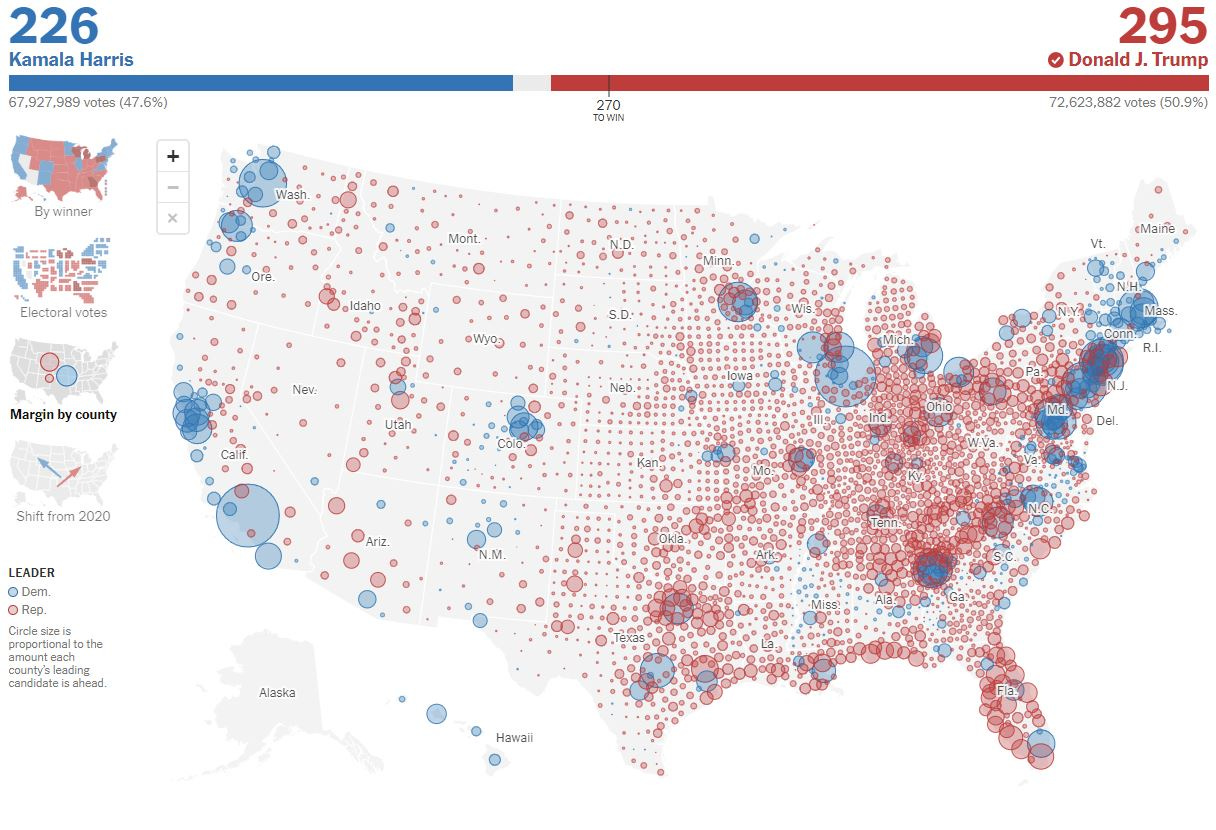I love data. I love data visualisations. I love the insights they reveal.
Over the course of the last few years, I have also realised that I embrace division. We are all different. And yet, we all need some sort of collective purpose - ‘community’, if you like - as part of our ‘identity’.
I have admitted many times that the COVID and climate scams have made me realise that there are broadly two types of people in the world - those who want freedom, to be left alone, to make their own choices - and those who want the convenience of the state to make those choices on their behalf.
Perhaps only in private, but now publicly, I think a solution of sorts to this dilemma, is simply to accept two societies, running in parallel with each other. Evidently, I fall into the first camp - we would be happy just to be left alone and fend for ourselves.
Interestingly, the Amish, who are an extremely good example of what I’m depicting felt so compelled this term that they came out and voted en masse for the Republicans1. I think their contribution to the Pennsylvania outcome in the US Presidential Election was quite obvious?
And this brings me to an insight I had when looking at the results at the county level on a nice map drawn by the New York Times.
Even if you are not familiar with US geography, it is pretty clear that the division in the US political scene is polarised by few, large pockets of Democrat voters, interspersed with a multitude of much smaller pockets of Republicans.
Inevitably, these divisions are manifest between cities and rural areas. You can probably identify the major Democrat centres - Seattle, Washington and Portland, Oregon in the north-west, Los Angeles, California in the west, Chicago and Minneapolis in the ‘mid-west’, and New York and Philadelphia in the north-east? You might even be able to identify Dallas and San Antonio, Texas in the mid-south, and Miami, Florida, of course, in the deep south-east, and Atlanta, Georgia, a little further north?
What is the insight? For me, it is apparent - the political divide is not along state lines but urban ones. It is not so much a country of united states as two countries of different united counties.
Efforts to organise politically, differentiating along these lines, rather than federal/geographical state separation, would be more likely to yield harmonious outcomes. In other words, massive decentralisation of political governance, which would actually probably work for both camps.
I am pretty sure all those little red circles would just like to be left alone, to live their lives in peace, making and taking personal responsibility for their actions. And, if the big blue circles want to be governed harder, they would willingly yield their share of centralised interference to them?!!
Essentially, the reds voted for less government, the blues for more. It’s a shame things didn’t turn out this way for the UK in May.
They fared pretty well during “COVID” too, left to their own devices. Go figure?!




Makes sense. Here is a thought experiment: Say states were gone and we instead had such "regions". In some regions abortion is banned and in others it is not. Everyone now lives in driving distance of a place that offers abortion. Thus the concept of banning abortion effectively does nothing. Not sure what insights to gain from that. I guess maybe there could be some law that you have to move and stay in that other region for at least some time either before or after having an abortion. This would effectively segregrate society to conceivably positive or negative ends.
Radical decentralization is required, shifting political power away from the Federal government to States and from States to counties and municipalities. Of course, the communists will resist every step of the way, because their collectivist schemes require centralized power to staunch the flow of freedom lovers out of blue gulags.